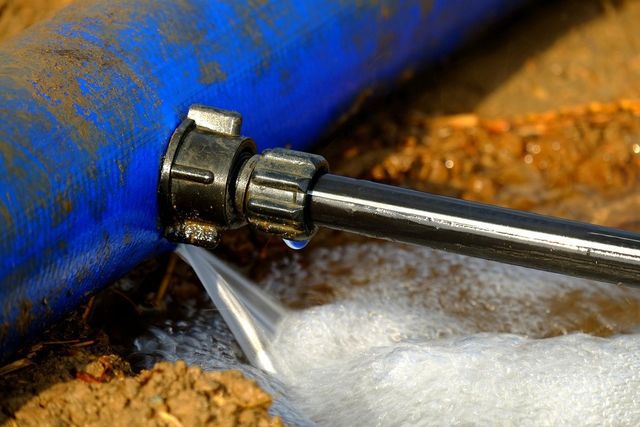Just how do you really feel with regards to Locating water leaks?

Early discovery of dripping water lines can minimize a potential catastrophe. Some small water leaks might not be visible.
1. Analyze the Water Meter
Checking it is a guaranteed means that helps you discover leakages. If it moves, that indicates a fast-moving leak. This means you may have a slow-moving leak that could even be underground.
2. Inspect Water Intake
If you identify unexpected adjustments, in spite of your intake being the exact same, it means that you have leaks in your plumbing system. A sudden spike in your costs suggests a fast-moving leak.
A steady increase every month, also with the same routines, reveals you have a sluggish leakage that's likewise gradually escalating. Call a plumber to thoroughly inspect your home, specifically if you feel a warm location on your floor with piping underneath.
3. Do a Food Coloring Test
When it involves water intake, 30% originates from toilets. Examination to see if they are running correctly. Decline flecks of food color in the storage tank and wait 10 mins. There's a leakage between the container and bowl if the shade somehow infiltrates your bowl throughout that time without flushing.
4. Asses Exterior Lines
Do not neglect to examine your exterior water lines as well. Must water seep out of the link, you have a loose rubber gasket. One small leak can squander bunches of water and surge your water costs.
5. Examine the scenario and also evaluate
Property owners must make it a practice to examine under the sink counters as well as even inside cupboards for any kind of bad odor or mold and mildew growth. These two red flags show a leak so timely interest is called for. Doing regular inspections, even bi-annually, can conserve you from a significant trouble.
Check for stainings and also compromising as the majority of pipelines and also home appliances have a life expectations. If you suspect dripping water lines in your plumbing system, don't wait for it to intensify.
Early detection of dripping water lines can alleviate a prospective calamity. Some tiny water leaks might not be visible. Examining it is a guaranteed means that aids you find leakages. One tiny leak can waste bunches of water and also surge your water costs.
If you think leaking water lines in your plumbing system, do not wait for it to escalate.
WARNING SIGNS OF WATER LEAKAGE BEHIND THE WALL
PERSISTENT MUSTY ODORS
As water slowly drips from a leaky pipe inside the wall, flooring and sheetrock stay damp and develop an odor similar to wet cardboard. It generates a musty smell that can help you find hidden leaks.
MOLD IN UNUSUAL AREAS
Mold usually grows in wet areas like kitchens, baths and laundry rooms. If you spot the stuff on walls or baseboards in other rooms of the house, it’s a good indicator of undetected water leaks.
STAINS THAT GROW
When mold thrives around a leaky pipe, it sometimes takes hold on the inside surface of the affected wall. A growing stain on otherwise clean sheetrock is often your sign of a hidden plumbing problem.
PEELING OR BUBBLING WALLPAPER / PAINT
This clue is easy to miss in rooms that don’t get much use. When you see wallpaper separating along seams or paint bubbling or flaking off the wall, blame sheetrock that stays wet because of an undetected leak.
BUCKLED CEILINGS AND STAINED FLOORS
If ceilings or floors in bathrooms, kitchens or laundry areas develop structural problems, don’t rule out constant damp inside the walls. Wet sheetrock can affect adjacent framing, flooring and ceilings.
https://www.servicemasterbyzaba.com/blog/how-to-detect-water-leakage-in-walls/

I ran across that post about Detecting hidden plumbing leaks when exploring the search engines. Sharing is good. Helping people is fun. Thanks a bunch for your time. Don't hesitate to check our blog back soon.